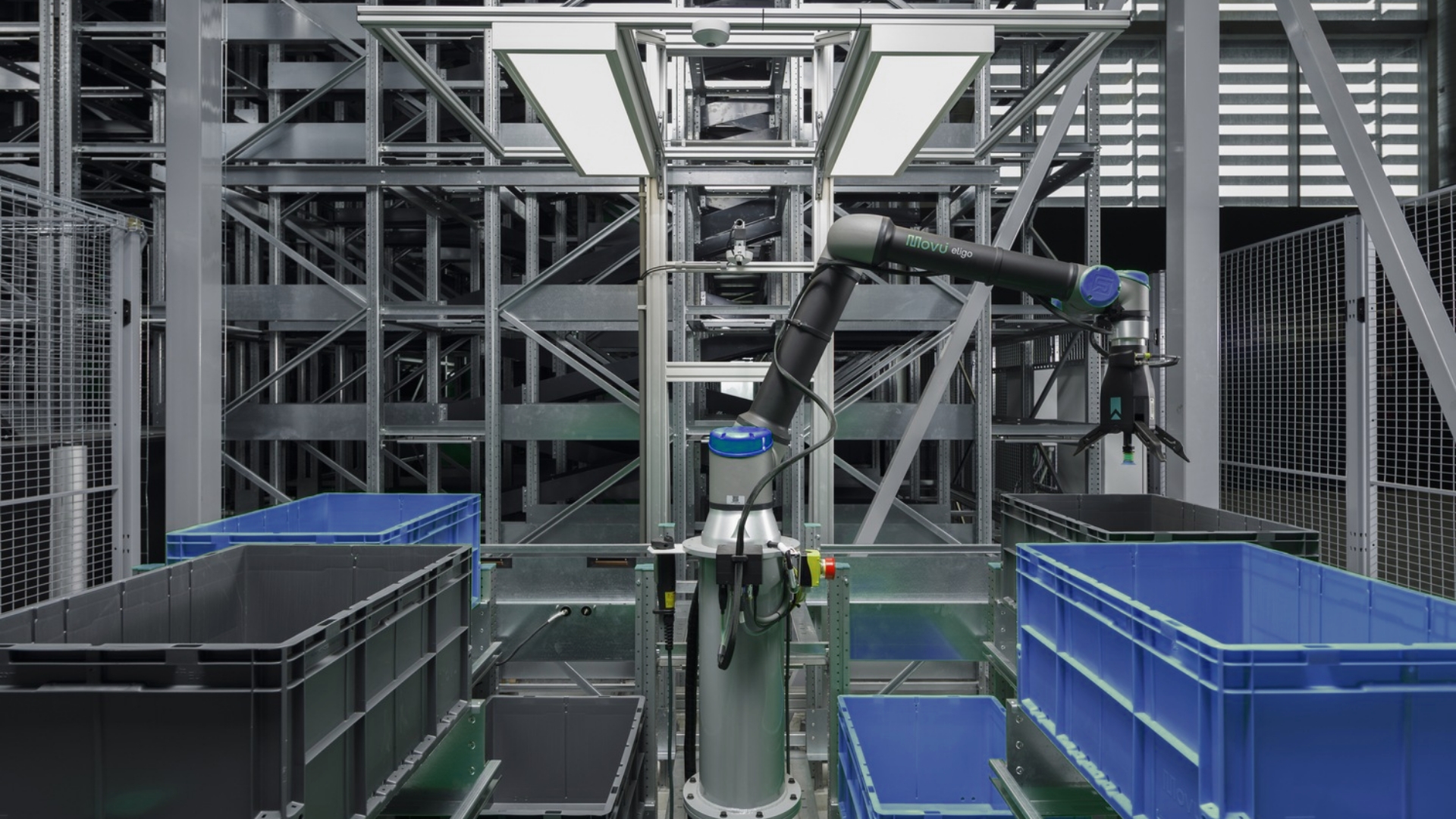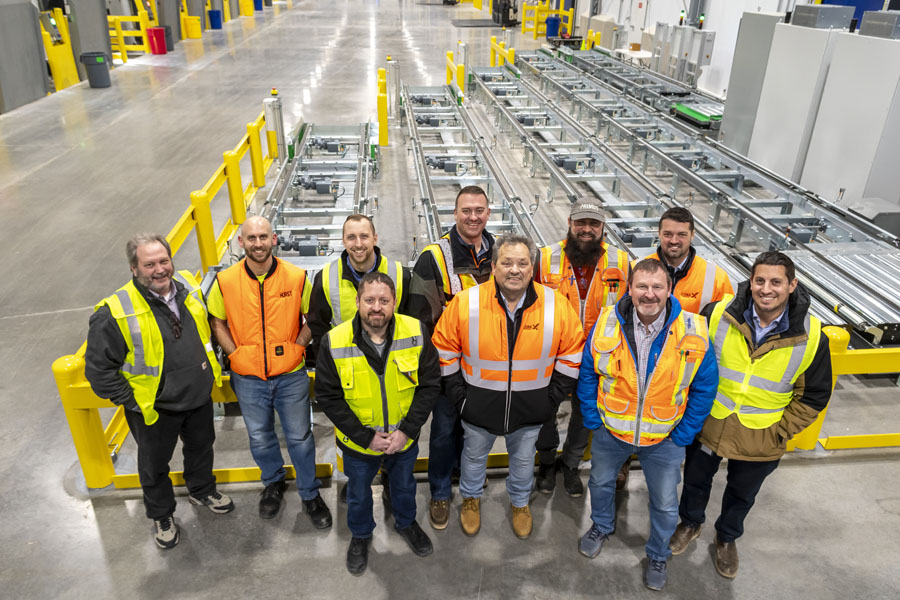Supply Chain Complexity for Food Manufacturers
Food manufacturers face logistics challenges that go far beyond moving products from point A to point B. Managing perishable goods across multiple temperature zones, coordinating various service providers, and maintaining regulatory compliance create a substantial operational burden.Managing Multiple Vendors and Handoffs
Traditional logistics models require coordinating between cold storage facilities, refrigerated transportation companies, and often multiple regional distribution centers. Each handoff introduces delays, communication gaps, and quality control concerns. The USDA reports that 30-40% of the U.S. food supply goes to waste, with logistics inefficiencies driving much of this loss. Products moving between disconnected vendors face temperature fluctuations during transitions that compromise product quality and shelf life. The coordination itself eats up time and resources. Operations managers spend hours scheduling pickups, confirming deliveries, tracking shipments across multiple systems, and fixing delays when they happen.Costs of Disconnected Systems
Supply chain inefficiencies increase total logistics costs for food manufacturers, according to the Food Marketing Institute. These expenses include:- Extended dwell times at facilities waiting for carrier pickups
- Duplicate handling processes as products move between vendors
- Administrative overhead managing multiple vendor relationships
- Premium spot market freight charges when coordination breaks down
- Product losses from temperature excursions during transitions
Integrated Transportation Benefits
Combining cold storage and transportation under a single partnership eliminates the coordination problems inherent in traditional multi-vendor approaches. This integration creates operational efficiencies while improving service quality and reducing risk—benefits that matter whether you’re working with a transactional vendor or a strategic partner.Eliminating Vendor Coordination Issues
Products flow smoothly from receiving through storage to outbound shipping without the delays and communication gaps that plague disconnected operations. At CORE X CROWN in Indiana, the MOVU automated storage system enables efficient pre-staging of products for outbound loads. Trucks arrive to find their freight ready for immediate loading. Integrated operations simplify scheduling by optimizing both storage operations and fleet utilization through a single system rather than coordinating pickup windows that work for both the facility and the transportation company.
Streamlined Scheduling and Reliability
The MyQueue system lets drivers check in using a QR code that notifies the shipping and receiving office of their arrival. This eliminates the dock delays and bottlenecks that commonly occur when facilities and carriers operate independently. Companies that tightly coordinate their supply chains connecting internal operations, customers, and suppliers consistently outperform those relying on disconnected systems.This reliability improvement directly impacts customer satisfaction and reduces emergency freight costs.Real-Time Visibility Across Storage and Transit
Integrated systems provide continuous visibility from the moment products arrive at the facility through final delivery. Rather than checking multiple vendor portals for status updates, you access a single system showing current location, temperature records, and estimated delivery times. Temperature monitoring demonstrates this integration’s value most clearly. Storage and transportation under separate vendors often means temperature logs using different systems, formats, and monitoring frequencies. An integrated approach maintains consistent temperature records throughout the product journey—simplifying compliance documentation and quickly spotting issues.The Partnership Difference

Distribution Strategy and Network Design
Effective logistics requires strategic thinking about network design, capacity planning, and distribution patterns. The right approach depends on factors including product mix, customer locations, and seasonal demand variations.Regional vs. National Considerations
Balancing regional expertise with national reach presents a key strategic decision. Regional facilities offer deep local knowledge, established relationships with area transportation providers, and quick response times for nearby customers. At locations like CORE X HUTT in Michigan or CORE X GRESS in Pennsylvania, decades of experience serving regional food manufacturers have created networks of reliable partnerships and refined operational processes. The CORE X Partners network demonstrates this regional-with-national-reach approach in action. Each facility brings specific regional strengths while coordinating together to support manufacturers with national distribution needs.Consolidation Opportunities for Cost Savings
Less-than-truckload (LTL) shipments present particular challenges. CORE X CROWN’s consolidation capabilities illustrate the value of bringing together shipments from multiple manufacturers destined for similar regions, enabling customers to access truckload rates even when their individual volumes don’t fill a truck. Effective consolidation programs can reduce transportation costs compared to shipping individual LTL shipments. These savings come not just from better freight rates, but also from reduced handling, simplified scheduling, and lower administrative burden.Strategic Overflow and Capacity Management
Seasonal demand swings create capacity planning challenges. Traditional long-term contracts often force manufacturers to either commit to space they don’t need year-round or scramble for spot market capacity during peak periods. Flexible capacity across multiple facilities that can absorb overflow during high-volume periods solves this problem without requiring expensive long-term commitments to unused space.Multi-Temperature Logistics Management
 Different products demand different temperature ranges. Managing this temperature diversity across both storage and transportation adds significant complexity.
FDA regulations under the Food Safety Modernization Act require food companies to establish and maintain proper storage temperatures for their products. Violations can result in recalls, regulatory action, and significant financial losses.
The CORE X Partners network maintains multiple temperature zones—dry, cooler, and frozen—enabling manufacturers to store their complete product range at a single location rather than coordinating with multiple specialty facilities.
Different products demand different temperature ranges. Managing this temperature diversity across both storage and transportation adds significant complexity.
FDA regulations under the Food Safety Modernization Act require food companies to establish and maintain proper storage temperatures for their products. Violations can result in recalls, regulatory action, and significant financial losses.
The CORE X Partners network maintains multiple temperature zones—dry, cooler, and frozen—enabling manufacturers to store their complete product range at a single location rather than coordinating with multiple specialty facilities.
Equipment and Technology Solutions
Modern cold storage facilities use automated temperature monitoring that alerts staff immediately if any zone deviates from acceptable ranges. Transportation equipment has evolved significantly, with today’s refrigerated trucks featuring multi-compartment designs that maintain different temperatures simultaneously. The integration of facility and transportation technology provides additional benefits. Rather than reconciling temperature logs from separate storage and carrier systems, integrated operations maintain continuous monitoring records throughout the product journey.Cost Optimization Strategies
Cutting logistics costs requires looking beyond individual line items to optimize total supply chain expenses.Total Supply Chain Cost vs. Line Item Pricing
Many manufacturers evaluate logistics costs by comparing individual component pricing—storage rates per pallet, transportation costs per mile, handling fees per case. While these comparisons have value, they often miss the bigger picture of total supply chain cost. Research from MIT CTL shows that optimizing the whole supply-chain design (rather than treating cost components separately) can lead to substantial cost reductions.This total-cost approach considers inventory carrying costs, transportation efficiency, labor and handling costs, quality issues and delays, and administrative burden. Integrated partnerships make total-cost optimization easier because the same team manages multiple components and can make trade-offs that reduce overall expenses even if individual line items don’t appear to be the absolute lowest available.Capacity Flexibility and Seasonal Planning
Many food products experience seasonal demand variations. Traditional contracts often force manufacturers to either commit to space they won’t fully utilize year-round or rely on expensive spot market capacity during peaks. A partnership approach offers more flexibility by maintaining relationships across multiple facilities that can absorb overflow during high-volume periods.Moving Forward with Integrated Logistics
Combining cold storage and transportation under unified coordination helps manufacturers reduce total supply chain costs while improving service reliability, simplify operations by eliminating vendor handoffs, access flexible capacity that scales with seasonal demand, and maintain consistent food safety compliance throughout the product journey.
Next Steps
Evaluating your current logistics operations provides the foundation for improvement. Consider these questions:- How much time does your team spend coordinating between storage and transportation providers?
- Do you have clear visibility into product location and condition throughout the supply chain?
- Are you optimizing total supply chain cost or primarily comparing individual vendor quotes?
- How well do your logistics partners understand your business goals and seasonal patterns?
